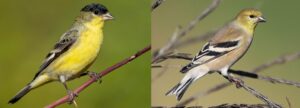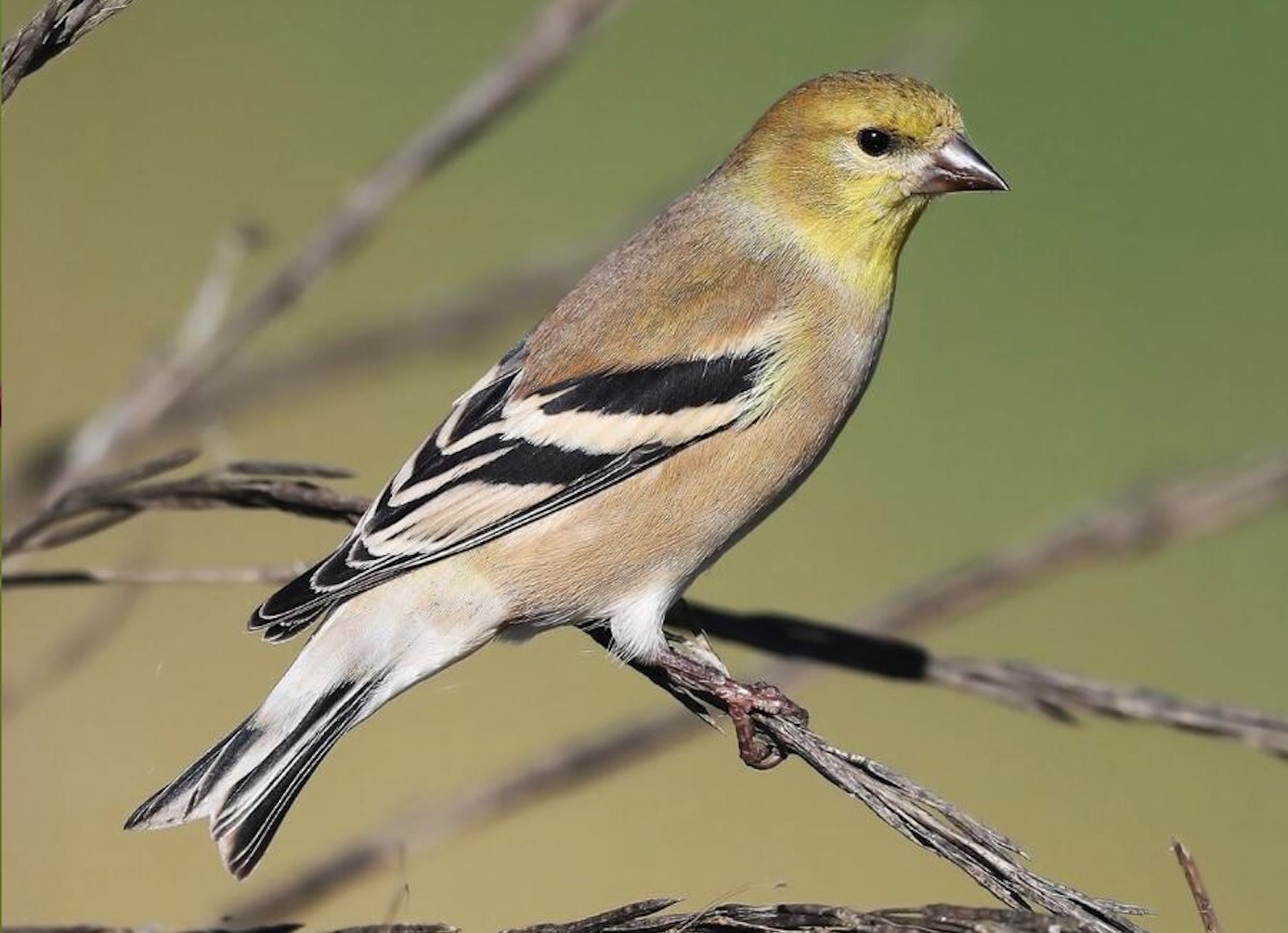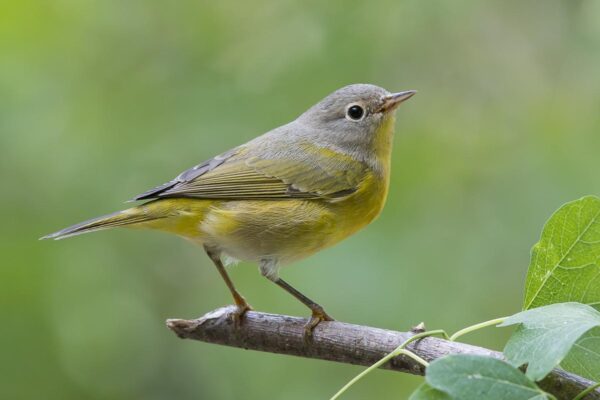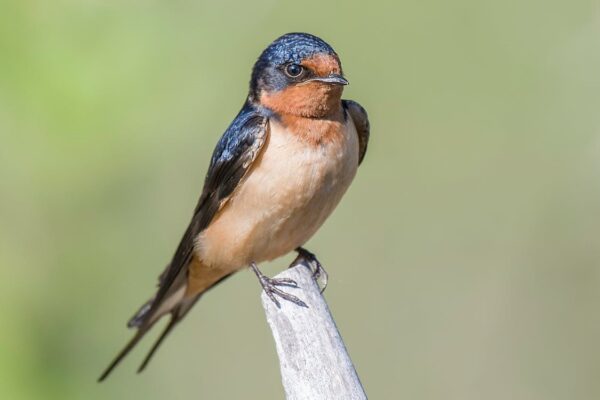American Goldfinch (Spinus tristis)
The American Goldfinch has the honor of being the state bird for three states: New Jersey, Iowa, and Washington. This small finch lives in central Texas during non-breeding seasons, and you’ll often find them at your feeder if you provide sunflowers and nyjer. You can also attract them by planting native thistles and milkweed, and they’ll feed on seed that’s spilled below feeders as well. These birds are strict vegetarians which leads to their breeding later – in June or July – since their primary food sources are going to seed at that point. This allows them to foil cowbirds that may lay eggs in the American Goldfinch’s nest; although the eggs may hatch, the baby cowbirds cannot survive on an all-seed diet. In your face, cowbird!
American Goldfinches are slightly larger than Lesser Goldfinches (5-9 inches long vs. 3-5 inches long) and their colorations also vary. In breeding plumage, the American Goldfinch is brighter in color and with more yellow on their backs than the Lesser Goldfinch. However, we tend to see the American Goldfinch most in central Texas wearing their non-breeding plumage which is duller in color than the Lesser Goldfinch (see photo below).
 Two birds perched on branches. Left: an adult male Lesser Goldfinch (credit: Sharif Uddin, Macaulay Library). Right: a non-breeding American Goldfinch (credit: Matt Davis, Macaulay Library).
Two birds perched on branches. Left: an adult male Lesser Goldfinch (credit: Sharif Uddin, Macaulay Library). Right: a non-breeding American Goldfinch (credit: Matt Davis, Macaulay Library).
American Goldfinches are partial to weedy and overgrown open areas where they can find thistle plants and shrubs for hiding and nesting. The female builds the nest at the top of shrubs that are out in the open, generally where two or three vertical branches cross. The nests are tightly woven – often to the point of being able to hold water, and they are lined with the soft material from seedheads. The female lays between two and seven eggs that incubate for about two weeks, with nestlings fledging in an additional two weeks. The mating pair will raise one to two broods per year with the male feeding the female during incubation and both feeding the nestlings on regurgitated seed matter.
These birds are acrobatic flyers and balance easily on seedheads, even as they are buffeted by the wind. They forage in flocks, except in mating season, and their flight is a bouncy up-and-down movement. They tend to be lovers rather than fighters in that they do not mob predatory birds.
These are common birds, but like many species, they are subject to conservation challenges with their population numbers having declined by 27% since 1966. Do your part to keep these handsome birds around by providing the seeds they prefer and enjoying their acrobatic flight and po-ta-to-chip call.
Compiled by Lisa S. Graham
Sources include All About Birds (Cornell) and Audubon Field Guide.




